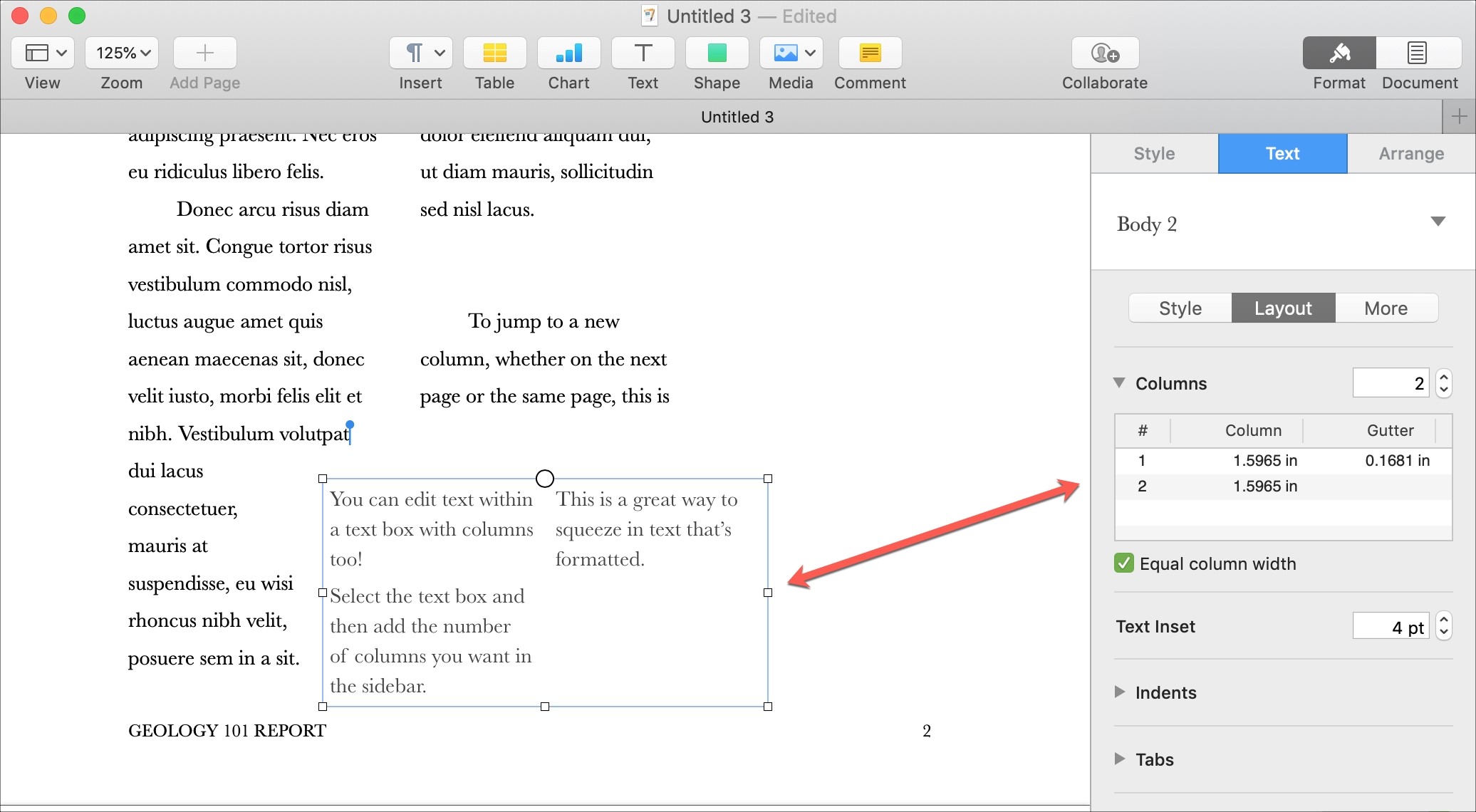

Move the multiple text boxes so that they are next to each other.Copy the text box to the Clipboard and paste it back into the document multiple times.Create your first text box so that it is the width of a single "column" in your layout.For limited text it can do the trick quite nicely, however.Īnother possible solution is to use multiple text boxes. This will, of course, require you to manipulate the text by hand since it won't automatically "snake" from one table column to another. Since text boxes are designed to contain limited amounts of text, you could place a table within the text box and place your text within the columns of the table. There are ways around the problem, however. They are graphics-based, not text-based, even though you can include formatted text within a text box. Text boxes, however, are independent elements that reside on the graphics layer of a document. Sections (and therefore columns) reside on the text layer of a document. Columns are a feature available on a section-by-section basis within a document. The reason is rather simple, based on an understanding of how Word documents are constructed. What if you want to place columns within a text box, though? You can also use text boxes to place "special" information into your document. The only difference is that instead of a check box for Header Rows, the text itself gets highlighted.When you plan the layout of your document, you can utilize columns by using the Columns tool on the Page Layout (Layout if you are using Word 2016 or a later version) tab of the ribbon.
#TWO COLUMNS ON WORD FOR MAC WINDOWS#
The steps for designating table headers in the online version of office 365 is the same as the steps for Windows Office 2013. In Office 2011, the Header Row checkbox can be seen in the Table tab in the ribbon. In Office 2016, the Header Row checkbox can be seen in the Table Design tab in the ribbon. In Office 2010, the Header Row checkbox can be seen in the Table tab in the ribbon.


In all the versions of Microsoft Office, designating a Header Row can trigger a change in the table appearance. The general process is to find the table formatting options in the the ribbon and check Header Row for each table. Microsoft Office allows you to mark the first row of a table as table headers in both PowerPoint and Word.


 0 kommentar(er)
0 kommentar(er)
